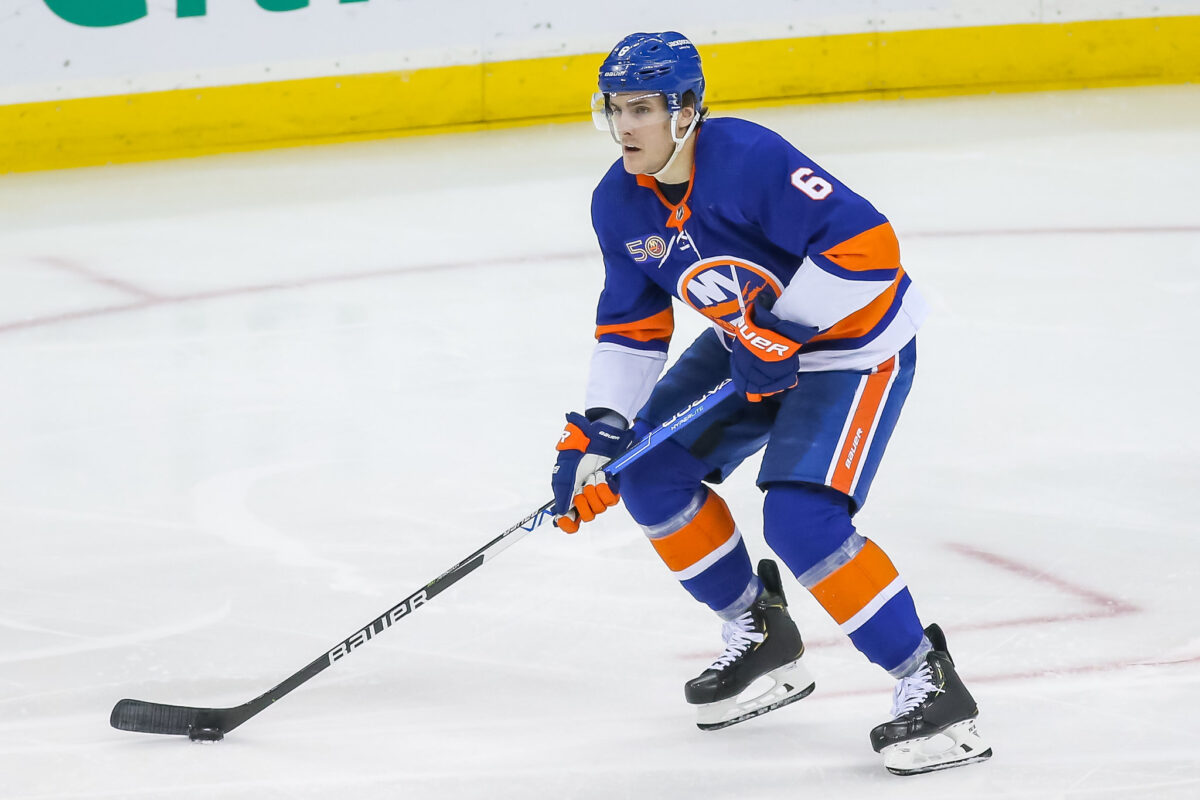The 2023-24 New York Islanders are a far cry from the team that made the Eastern Conference Final and semi-finals in the 2020 and 2021 seasons, and there are many reasons for that. The team Lou Lamoriello has built has led to minimal roster turnover but multiple coaching changes and consistent injuries. While bumps in the road happen, there is one struggle this team has faced that can be seen night in and night out: a complete lack of structure.
Controlling the Slot
Every coach tells their players to go to the net because that is where good things happen. Shooting from the center of the ice, in the slot, and around the net, is the ideal vantage point for a shooter, leading to the most opportune chances. Defensively, the Islanders have lost control of the center of the ice, regularly allowing opponents to cruise in and utilize these high-danger chances.
Related: Islanders’ Anders Lee: The Unluckiest Man in the NHL
These struggles have existed since former head coach Lane Lambert’s tenure began, and still exist today under Patrick Roy. If you want to see them, tune into any game from this season and you will understand. However, these struggles are best seen in the team’s March 17 loss to the New York Rangers.
The game began with a strong first period from the Islanders, making poised passes and controlling the defensive zone. They looked like a great hockey team, capable of beating the Presidents’ Trophy race-leading Rangers. How did they follow up their first-period efforts? By allowing elite goal scorer Mika Zibenejad to take a wide-open slapshot from the center of the ice to tie the game at one. Ryan Pulock turned the puck over and Alexander Romanov was standing in the corner, leading to the open shot and goal.

The Rangers’ next goal came from Will Cuylle on an unguarded wrist shot from the hash marks, another open shot from in front of the net. Then minutes after Bo Horvat tied the game at two, the Islanders’ defense allowed Jonny Brodzinski to stand in front of the net, unguarded, deflecting a K’Andre Miller shot for an easy goal to regain the lead. In the third period, Alexis Lafreniere scored a strikingly similar goal to that of Zibenejad in the first, solidifying a Rangers’ win.
Penalty Kill Woes
Pointing out these struggles is not meant to make fun of the Islanders and say they are bad. This roster is very similar to that of the team two goals away from making the Stanley Cup Final just a few seasons ago, but they do not play the same anymore. There is no structure, consistency, or drive in this current roster. The team makes the same mistakes each game, without fail. While they can get away with these mistakes on some shifts, over time they are exposed, and nowhere more noticeable than on the penalty kill.
The Islanders used to be one of the most structured teams in the league, and this is most important on the penalty kill as it heavily relies on structure. When their defenders leave the center of the ice open on the penalty kill, it allows the opposition to screen the goaltender with ease, and position themselves best for rebounds. While it is easier said than done, all good penalty kills force the opponents to make a good play to score, they do not give it to them inherently.

The penalty kill currently sits dead last in the NHL with a 71.71 percent success rate, and it has been this way the entire season. Yet, changes in the unit are unrecognizable. While injuries to the defense can be blamed, a now near-full healthy defense plays the same way. Special teams win and lose games, and for the Islanders, it will be one of the most significant factors that has led to their disappointing season.
At the end of the day, the Islanders still have an opportunity to fight their way into the playoffs. A regulation win over the Philadelphia Flyers in their April 1 matchup would place them three points back with two games in hand, essentially allowing them to control their playoff aspirations. While it will be tough, they need to take advantage of the opportunities that lie ahead.